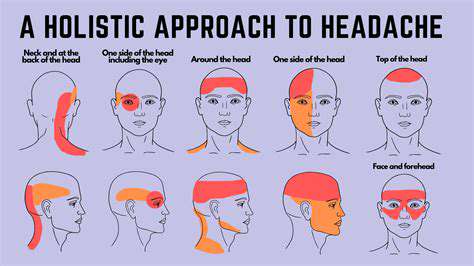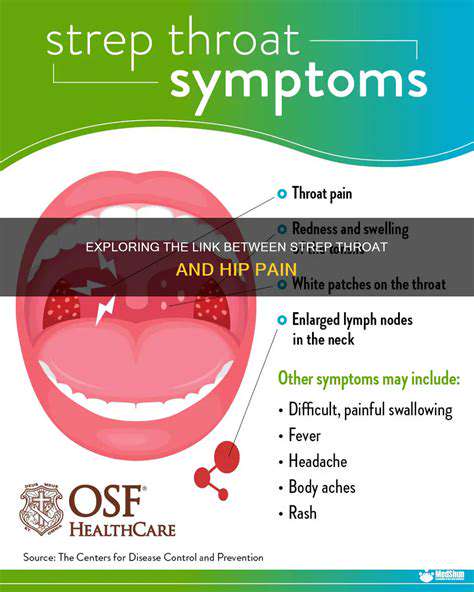Common Causes of Head Pain

Types of Head Pain
Head pain can manifest in various forms, each with its own unique characteristics. Understanding the type of headache is essential for effective treatment. Common types include tension headaches, migraines, and cluster headaches. Each type may require different approaches in terms of management and medication.
Tension headaches are often described as a dull, aching sensation that feels like a tight band around the head. They can be triggered by stress, fatigue, or poor posture. Alternatively, migraines are typically more intense and can be accompanied by nausea and sensitivity to light or sound.
Cluster headaches, while less common, are extremely painful and occur in cyclical patterns, often affecting one side of the head. They can lead to significant disruption in daily activities during an episode. Understanding these types can help patients seek appropriate medical advice.
It’s important for individuals experiencing any form of head pain to keep a headache diary. This can help identify patterns and triggers, enabling healthcare providers to suggest targeted treatments.
Common Triggers of Head Pain
Identifying triggers is crucial for managing head pain effectively. Common triggers can include stress, hormonal changes, certain foods, and environmental factors. Awareness of personal triggers can significantly reduce the frequency of headaches.
Stress is a prevalent trigger, as it may lead to muscle tension in the neck and scalp. This tension can result in tension headaches. Hormonal changes, particularly in women, can also cause migraines due to fluctuations in estrogen levels.
Certain foods like aged cheeses, processed meats, and alcohol can be culprits for migraines in susceptible individuals. Environmental factors such as bright lights, strong odors, and weather changes can contribute to head pain as well.
Maintaining a balanced lifestyle that includes proper hydration, regular exercise, and good sleep hygiene can help mitigate these triggers. Each person’s experience is different, so personal management plans should be tailored accordingly.
Connection Between Throat Pain and Head Pain
The interconnectedness of head and throat pain can often lead to confusion about the underlying causes. In many cases, issues such as sinus infections or allergies can cause both head and throat discomfort. A thorough examination is essential to determine the root cause of simultaneous symptoms.
Sinusitis can lead to pressure in the head and throat, resulting in pain. When the sinuses become inflamed, they can cause headaches that radiate down to the throat area. Likewise, throat infections, such as strep throat, can lead to referred pain in the head.
Another connection is through tension. Stress and anxiety can manifest physically, contributing to muscle tension in both the head and throat. Thus, treating one may alleviate symptoms of the other.
If patients experience persistent or severe symptoms in both areas, seeking medical advice is critical. A healthcare provider can evaluate the situation comprehensively and provide appropriate treatments.
Diagnosis and Evaluation of Head Pain
Diagnosing the cause of head pain begins with a thorough medical history and physical examination. Healthcare providers will ask about the nature of the pain, frequency, duration, and any associated symptoms. This comprehensive approach helps in identifying the underlying issue.
Diagnostic imaging may also be used if necessary, including CT scans or MRIs, especially in cases of severe or unusual headaches. These tests can help rule out more serious conditions like tumors or vascular issues.
Laboratory tests may be conducted to check for underlying health problems, such as infections or hormonal imbalances. Keeping track of headaches using a diary can provide valuable insights and guide the diagnostic process.
Ultimately, an accurate diagnosis enables targeted treatment strategies, enhancing the patient's quality of life. Follow-up appointments are crucial to monitor progress and adjust treatment as needed.
Treatment Options for Head and Throat Pain
Effective treatment of head and throat pain typically involves a multimodal approach. Over-the-counter medications like NSAIDs can alleviate pain, but it is essential to use them appropriately. Consulting a healthcare professional for personalized treatment is highly recommended.
For recurring headaches, prescription medications may be necessary, especially if they are classified as migraines or cluster headaches. Preventive medications can also be offered to reduce the frequency and severity of episodes.
Non-pharmacologic treatments, including physical therapy, stress management, and dietary changes, can aid in symptom relief. Practices such as yoga or meditation help manage stress that may trigger head pain.
In more severe cases, procedures such as nerve blocks or biofeedback therapy may be considered. A collaborative approach with healthcare providers ensures comprehensive management tailored to the patient's needs.
Exploring Throat Pain

Common Causes of Throat Pain
Throat pain can arise from a variety of factors, including viral infections, bacterial infections, allergies, and environmental irritants. One of the most common culprits is a viral infection, such as the flu or common cold. These infections can cause inflammation and discomfort in the throat area. In some cases, a bacterial infection like strep throat may also lead to severe throat pain that requires medical attention.
Allergies to pollen, dust, or pet dander can also cause throat irritation. When the body responds to an allergen, it can lead to swelling and inflammation in the throat, resulting in pain. It's essential to identify and manage these allergens to alleviate throat discomfort.
Environmental irritants such as smoke, pollution, and chemical fumes can exacerbate throat pain. People who are regularly exposed to these irritants may notice a persistent sore throat. Addressing exposure and mitigating these factors can significantly improve throat health.
Gastroesophageal reflux disease (GERD) is another potential cause of throat pain. Stomach acid can flow back into the esophagus, leading to irritation and discomfort in the throat area. Identifying and treating GERD can help relieve associated throat pain.
Lastly, muscle strain from excessive talking, yelling, or singing can lead to throat pain. Using the voice correctly and ensuring appropriate vocal rest can prevent strain-related issues.
When to Seek Medical Attention
While many cases of throat pain resolve on their own, it is crucial to know when to seek medical assistance. If throat pain persists for more than a few days, it’s advisable to consult a healthcare provider. Chronic pain can be a sign of a more serious underlying condition that needs to be addressed.
Additionally, if you experience difficulty swallowing or breathing, medical attention should be sought immediately. These symptoms can indicate a severe infection or obstruction in the throat that requires urgent care. Ignoring such symptoms can lead to complications.
Fever accompanying throat pain may also warrant a visit to the doctor, especially if it is high or persistent. This could signify an infection that may require treatment, such as antibiotics for bacterial infections.
Other alarming symptoms include a rash, swollen lymph nodes, or blood in saliva. These symptoms can indicate conditions like mononucleosis or other significant health issues that should not be overlooked.
In summary, while mild throat pain can be common and self-limiting, recognizing the signs that necessitate medical evaluation is vital for maintaining overall health.
When to Seek Medical Attention
Identifying Symptoms of Severe Pain
Head and throat pain can manifest in various ways, and recognizing the severity of the symptoms is crucial for timely intervention. Symptoms such as persistent headache, difficulty swallowing, or swelling in the throat might indicate a more serious underlying condition.
If the pain is severe enough to interfere with daily activities or if it persists for more than a few days, it's essential to consult a healthcare provider. Other red flags include fever, unusual fatigue, or changes in vision, which may require immediate medical attention.
Common Causes of Head and Throat Pain
Several conditions can lead to simultaneous pain in the head and throat. Common culprits include infections such as viral or bacterial throat infections, sinusitis, or even migraines that can radiate pain throughout the head and neck regions.
In some cases, allergies or environmental factors such as pollution can contribute to discomfort. Understanding these causes can help in seeking appropriate treatment and preventing recurrences of pain.
Home Remedies and Self-Care Tips
For mild cases of head and throat pain, several home remedies may provide relief. Staying hydrated, using throat lozenges, and gargling with warm salt water can help alleviate throat discomfort. Additionally, over-the-counter pain relievers may reduce headache symptoms.
Resting in a comfortable position and applying warm compresses to the forehead and neck can also be beneficial. However, these remedies are not substitutes for professional medical advice, especially if symptoms worsen.
Preventive Measures and Healthy Practices
Preventing head and throat pain can often be achieved through healthy lifestyle choices. Staying hydrated, eating a balanced diet, and practicing good hygiene can reduce the risk of infections that lead to pain. Regular physical activity can also strengthen the immune system.
It's essential to avoid known triggers, such as allergens or irritants, and to manage stress through relaxation techniques. When immune health is prioritized, the body is better equipped to ward off illnesses that can cause discomfort in these areas.
Home Remedies for Relief

Identifying Home Remedies for Head and Throat Pain
When experiencing pain in the head and throat, it's essential to seek effective home remedies. Natural ingredients like honey, ginger, and lemon can provide soothing relief. Many traditional practices have emerged over time, catering to this specific issue.
For instance, herbal teas infused with chamomile or peppermint not only hydrate but also offer anti-inflammatory benefits. Incorporating these remedies into your routine may alleviate symptoms and enhance overall comfort.
The Role of Hydration in Pain Management
Staying hydrated plays a crucial role in managing both head and throat pain. Drinking ample water helps keep the mucous membranes moist, reducing irritation. In addition, warm liquids like broths and teas can provide additional relief.
Hydration boosts the body's immune response, which can be especially beneficial during illness. Therefore, ensuring an adequate fluid intake should be a primary focus for effective pain management.
Over-the-Counter Options and Their Efficacy
While home remedies are effective, over-the-counter medications may also provide significant relief from pain. Common options include pain relievers like ibuprofen or acetaminophen, which target inflammation and discomfort. These medications can offer quick results.
Additionally, throat lozenges can help soothe soreness and irritation. Consulting with a healthcare professional can ensure the best choice of medication tailored to individual needs.
When to Seek Professional Help
While many cases of head and throat pain can be treated at home, certain symptoms warrant professional attention. If the pain persists for more than a few days or is accompanied by high fever, it may indicate a more serious condition.
Other red flags include difficulty swallowing or breathing, which require immediate medical evaluation. Recognizing these warning signs can be life-saving and is an important aspect of health management.
Preventive Measures
Regular Health Check-ups
One of the most effective preventive measures for head and throat pain is to schedule Regular Health Check-ups with a healthcare professional. These appointments can help identify underlying health issues before they escalate into more severe symptoms. Conditions like allergies, sinus infections, or dental problems can often lead to head or throat discomfort, and early detection can make treatment easier and faster.
During these check-ups, your doctor can perform necessary tests and assessments, allowing for tailored advice based on your health history. By discussing any recurring issues, you can work together to develop a proactive approach to your health and well-being.
Moreover, staying up to date on vaccinations, such as the flu shot or other relevant immunizations, can also minimize the risks of infections that typically cause head and throat pain.
Healthy Lifestyle Choices
Adopting a healthy lifestyle plays a critical role in preventing head and throat pain. Regular physical activity, a balanced diet rich in vitamins and minerals, and adequate hydration can significantly bolster the immune system and overall health. Foods high in antioxidants, such as fruits and vegetables, are particularly beneficial in reducing inflammation and combating infections.
Additionally, managing stress through practices like meditation, yoga, or other relaxation techniques can lower your risk for tension headaches and throat discomfort related to stress. Implementing a regular sleep schedule ensures that your body gets the rest it needs to recover and function optimally.
Avoiding known triggers such as smoking, excessive alcohol consumption, and exposure to allergens can also play a vital role in reducing the frequency of headaches and throat pain. By making these conscious choices, you can significantly lower your risk of experiencing these discomforts.